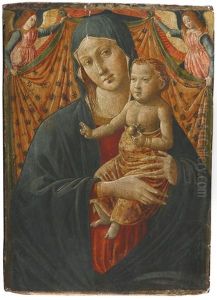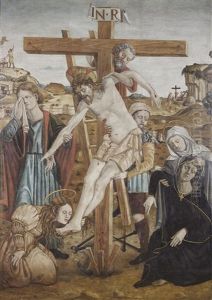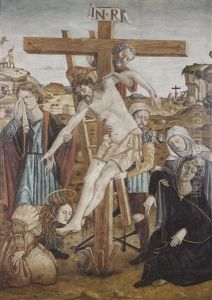Alesso Di Benozzo Paintings
Alessio di Benozzo, also known as Alesso di Benozzo Gozzoli or simply Alesso di Benozzo, was an Italian painter of the Renaissance period, born in 1447 in Florence, Italy. He was the son of the more famous Benozzo Gozzoli, under whom he first trained, learning the craft and techniques that his father mastered and was known for throughout Italy. The Gozzoli lineage thus represents a fascinating thread within the tapestry of Italian Renaissance art, with Alesso carrying forward the familial artistic legacy.
Alesso’s artistic journey is somewhat shadowed by the towering reputation of his father, Benozzo Gozzoli, who was renowned for his vibrant frescoes and detailed narrative scenes, especially those in the Chapel of the Magi in Florence’s Palazzo Medici Riccardi. Despite the challenge of emerging from his father’s shadow, Alesso developed a distinctive style, characterized by delicate coloration and a keen eye for detail, which mirrored the qualities admired in his father's work but also showcased his unique talents and perspectives.
Throughout his career, Alesso contributed to several important works and projects, often collaborating with other artists. His works are noted for their detailed landscapes and intricate figures, which show a continuation of the Gozzoli family’s artistic traits while also reflecting the broader developments within Renaissance art, such as an increased attention to perspective and the human form. However, specific works attributed solely to Alesso are scarce, as much of his career was spent assisting his father or working within larger collaborative efforts, which was common in the era’s artistic practice.
After his father’s death in 1497, Alesso’s own output and his contributions to the Italian Renaissance began to fade from historical records. Though lesser-known than his father, Alesso di Benozzo’s work remains an integral part of understanding the Gozzoli artistic legacy and the broader currents of Renaissance art. His death marked the end of an era for the Gozzoli family’s direct involvement in the flourishing of Italian Renaissance painting, but their collective contributions continue to be celebrated by art historians and enthusiasts alike.
The legacy of Alesso di Benozzo, though not as extensively documented as that of his father, is still observed in the study of Renaissance art, particularly in the examination of familial workshops and the transmission of artistic skills and styles across generations. His work helps to illuminate the collaborative nature of Renaissance art production and the subtle shifts in style and technique that occurred from one generation to the next within artistic families.











